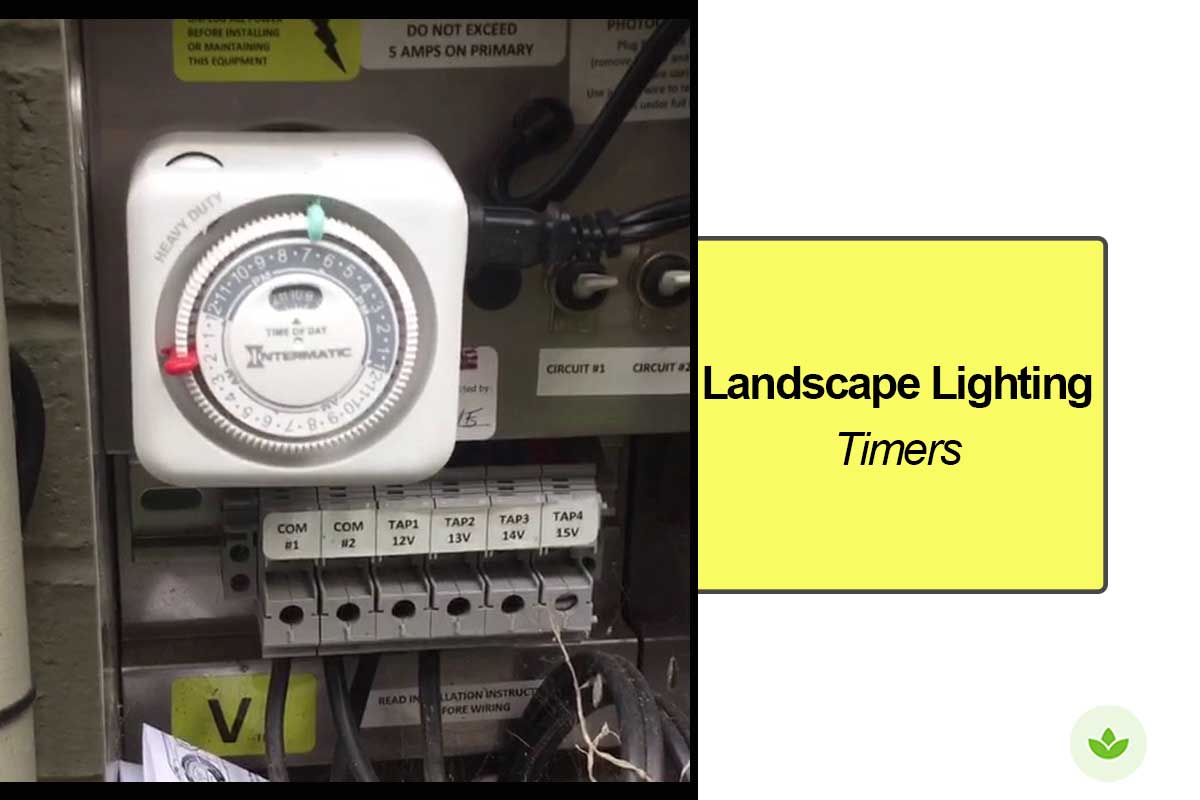Landscape lighting timers are handy equipment. They eliminate the need to manually turn your outdoor lights ON or OFF. By connecting a timer to a light transformer, you can efforly manage your outdoor lighting.
There are different timer options to cater to various system needs and budgets. Most of these timers fall into two main categories: mechanical and digital. Mechanical timers utilize spring-loaded mechanism and moving parts to measure time intervals and switch lights on and off. Digital timers employ electronic programs and sensors for automatic switching.
1) Analog/Mechanical timers
A mechanical timer is also known as an analog or manual timer.
Analog timers operate using a spring mechanism that measures timer intervals. You can set the specific on/off times using rotating gears and tabs on a clock face to adjust a dial and place pins at the desired time slots.
Analog timers are available in two forms: plug-in switches that go into a transformer and in-wall switches, installed into a wall.
Mechanical timers are easy and cost-effective to install and use. What’s more, some allow multiple on/off times within a 24-hour period but most operate on 60-minute intervals.
However, there are some drawbacks. Manual adjustment are necessary after power outages. They also require recalibration for daylight savings with changing seasons. Additionally, these timers lack precision and advanced features. The moving parts can wear out, needing periodic maintenance.
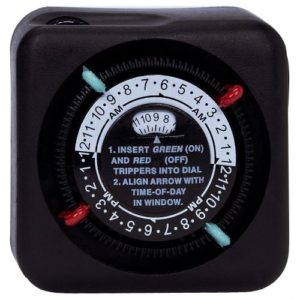
Mechanical timer
2) Digital timers
A digital timer, also known as an electronic or programmable timer, operates using electronic components. Digital timers;
- Ensure precise timing
- Offer wide array of programming options
- Offer multiple time settings
- Require less maintenance
- Boast a longer lifespan
Digital timers come in sleek, compact and aesthetically pleasing designs. Many models allow users to set multiple on/off schedules for various days of the week. Other models automatically adjust for daylight savings although some require manual adjustments.
Setting the timer involves using buttons to navigate an LCD display where you program the specific on/off schedules. Some versions feature light sensors (photocells) that adjust lighting based on the detected ambient light levels. Newer models can be connected to smart devices for remote control and integration with home automation systems.
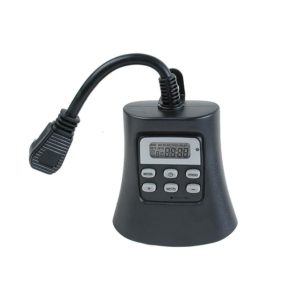
Digital timer
3) Photocell
A photocell, also known as a dusk to dawn timer, is a light sensor designed to activate lights based on ambient light levels. It automatically turns lights on at sunset and off at dawn or a specific pre-set time when combined with a timer.
However, photocells might struggle to accurately detect light levels if the transformer is placed in a shaded or indoor area. Additionally, they lack the flexibility to set different on/off times.
If you want to schedule lights to turn off before sunrise, an additional timer is required to override the photocell on the transformer.
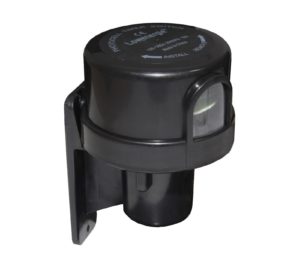
Photocell timer
4) Astronomical timers
Astronomical timers are advanced digital devices that operate based on your locations.
These timers precise programming capabilities. They use GPS coordinates or zip code to precisely determine sunrise and sunset times based on geographical location, automatically switching the outdoor lighting accordingly.
Astronomical timers allow for multiple on/off times. In addition, they often feature built-in battery-powered memory, preserving settings even in the event of a power outage.
They also automatically adjust for daylight savings times ensuring the landscape lighting are activated and deactivated at the optimal times of the day. This self-adjusting feature eliminates the need for manual tweaks after the initial setup. They follow a “set it once and forget about it” approach.
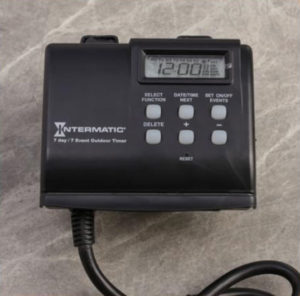
Astronomical timer
5) Smart Control timers
Smart timers offer control over outdoor lighting systems using smart devices like smartphones or tablets through dedicated apps. Users can schedule lights to activate at different times or set random intervals.
Some offer advanced functionalities such as creating distinct lighting zones, adjusting color temperature, and enabling dimming options.
While these features enhance customization, smart timers typically come at a higher cost compared to other alternatives.
To Wrap Up
Choosing the ideal programmable outdoor light timer depends on your system requirements. But this selection will not be necessary if your landscape light transformer comes with a built in or plug in timer.
Seeking advice from a landscape lighting designer can offer valuable insights. Their expertise can assist you in choosing the appropriate control system, potentially saving both time and energy.

